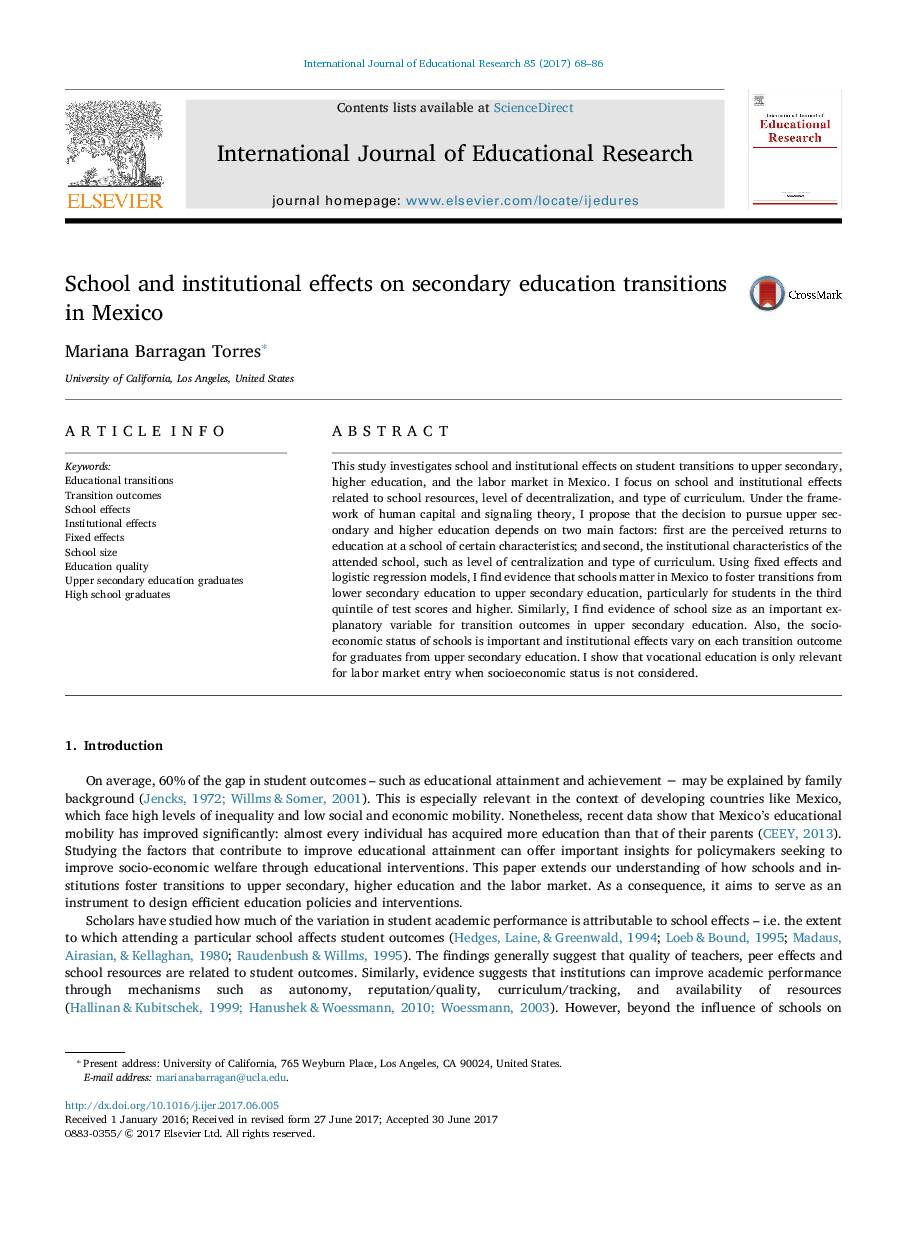ترجمه فارسی عنوان مقاله
تأثیرات مدرسه و نهادی در گذر دوره های متوسطه در مکزیک
عنوان انگلیسی
School and institutional effects on secondary education transitions in Mexico
| کد مقاله | سال انتشار | تعداد صفحات مقاله انگلیسی |
|---|---|---|
| 102227 | 2017 | 19 صفحه PDF |
منبع

Publisher : Elsevier - Science Direct (الزویر - ساینس دایرکت)
Journal : International Journal of Educational Research, Volume 85, 2017, Pages 68-86
ترجمه کلمات کلیدی
انتقال آموزشی نتایج منتخب، اثرات مدرسه، اثرات نهادی، اثرات ثابت، اندازه مدرسه، کیفیت آموزش، فارغ التحصیلان دوره متوسطه متوسطه، فارغ التحصیلان دبیرستان،
کلمات کلیدی انگلیسی
Educational transitions; Transition outcomes; School effects; Institutional effects; Fixed effects; School size; Education quality; Upper secondary education graduates; High school graduates;
ترجمه چکیده
این مطالعه به بررسی اثرات مدرسه و نهادی بر انتقال دانش آموزان به دوره متوسطه، آموزش عالی و بازار کار در مکزیک می پردازد. من بر تأثیرات مدرسه و نهادی مربوط به منابع مدرسه، سطح تمرکززدایی و نوع برنامه درسی متمرکز هستم. در چارچوب نظریه سرمایه انسانی و سیگنالینگ، پیشنهاد می کنم که تصمیم گیری در مورد تحصیلات فوق دیپلم و تحصیلی به دو عامل اصلی بستگی دارد: اول، بازخورد درک شده در آموزش در یک مدرسه با ویژگی های خاص، و دوم، ویژگی های سازمانی مدرسه حضور یافته، مانند سطح تمرکز و نوع برنامه درسی. با استفاده از اثرات ثابت و مدل های رگرسیون لجستیک، مدارکی را برای مدارس در مکزیک پیدا می کنم تا از گذراندن دوره های نیمه پایه تا آموزش متوسطه، به ویژه برای دانش آموزان در مقیاس سوم آزمون های بالاتر و بالاتر، تقویت شود. به طور مشابه، شواهدی از اندازه مدرسه را به عنوان یک متغیر توضیحی مهم برای نتایج انتقالی در آموزش متوسطه پیدا می کنم. همچنین وضعیت اجتماعی اقتصادی مدارس مهم است و تأثیرات نهادی در هر مرحله گذار برای فارغ التحصیلان تحصیلات متوسطه متفاوت است. من نشان می دهم که آموزش حرفه ای فقط برای ورود به بازار کار مناسب است، زمانی که وضعیت اجتماعی و اقتصادی در نظر گرفته نمی شود.

